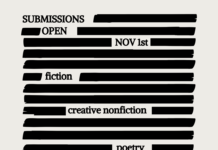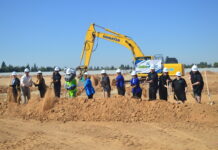
By Beth Eva | Contributed
Owner of Heartland Ranch
Hello again friends! Beth Eva of Heartland Ranch Horse Training and Lessons here with the third segment in our series on horse buying tips and advice. In this article I’d like to further discuss the attributes of the horse you should be looking for, and also give you some insight on how to handle the actual transaction when you do find a horse you’re interested in.
So let’s take it for granted that you’ve heeded my advice from the first two parts of this series and found a horse that you think might be the one for you. It’s a horse whose age, breed, temperament, training and experience all conform to both you and your intended use. I’d like to add a quick bit of opinion about a horse buying issue that I see very often: size of the horse. Many people seem to think that they need a horse at least 15.3hh or larger to carry them around on a trail or in an arena. This is simply not true. The size of a horse is not as important as its temperament, physical condition and “heart.” Smaller horses often have longer lives, less physical disability from carrying less body weight, and can have greater physical endurance. So don’t think that you need a larger horse than you actually do. You’ve considered the time of year, your available riding time, and boarding accommodations. You’ve also planned a budget for feed, tack and other essentials. Now it’s time to call the seller and make an appointment to see the horse. A quick note of warning: be cautious if at any point you determine the seller to be a “horse trader.” Like a used car salesman, some are reputable and some are not. Google them to see if they have positive or negative comments or reviews on prior sales, or ask around within the horse community to see what reputation they have earned. Some individuals have a good or bad reputation they have not earned, so don’t take any one story as fact, just go with your gut instinct on the person.
When you call the seller, you should try to set up the initial meeting on neutral ground, preferably with your trainer or other educated horseperson with you, so that you can see the horse in an environment that’s new to the horse. Putting the horse in a new environment will bring out how the horse will act when you take it from its existing home, and often brings to light behavioral issues that could be masked by the horse being in its comfortable, well known surroundings and near its barn mates. You want to see how the horse will react under some slight stress, because safety is your most important buying criteria and you want to be sure that you can handle the horse when the situation is less than ideal. Do you want to find out that the horse you just purchased has some extreme behavioral problem only after bringing it home? I think not. If and when you can arrange for a neutral meeting place to see the horse, ask the seller to leave the horse unworked and unsaddled until you’ve had a chance to see it first. If the horse appears to be sweaty, or its coat looks matted like it was worked and then rested, it might have been exercised prior to your visit to work off extra energy so it will appear calmer than it actually is. You want the chance to watch the horse be tacked up, that is to say groomed, saddled and bridled, so that any issues with picking up its feet, being cinchy or hard to bridle will be exposed. Take note that some less honest sellers have been known to drug horses so they appear more docile or to hide lameness issues, and it’s not always readily apparent. Seeing it unsaddled also allows you to see the conformation of the horse and makes obvious things like a swayed back that could be hidden with a saddle. On a side note, one good way to tell if the horse has been drugged is to leave it with a neutral third party for three days, giving any drugs a chance to wear off completely and then see if the horse is mentally and physically the same as when you first saw it.
It is very important to have someone on your side that has a very good working knowledge of horse health, behavior and the appropriate style riding for that horse. It is common to be able to schedule your first meeting at a trainer’s facility, where they can assist you in evaluating the horse and they have things such as a round pen and riding arena available for your use. Ask questions that can help you determine the horse’s health history, use, training, and temperament. How long has the seller owned the horse, and why are they selling? Who is the current vet and Farrier, and would be able to speak with them about this horse? Is the horse papered, which matters if you plan on breeding a mare or as age verification for a gelding (you’ll notice I didn’t mention Stallions, as I think that there are very few people who should own a stallion, and they most likely wouldn’t be seeking advice on a purchase). Are there any obvious signs of previous or current injury? Are there any special considerations with tack type or fit, feed or supplements? Understand that while many horses have individual needs, you should not rule them out as your next horse. Some things like a specialized feeding or health care program, or even uncommon saddles and tack can often be a very expensive consideration in horse ownership.
Inspect the horse tied and untied. Is he respectful of your space and does he give off of light pressure, or is he numb and slightly pushy? Does he lead well? Can you load him easily into and unload him out of a trailer of a similar type to what you own or have access to? Does the horse seem calm and confident, or cautious and jumpy? Watch as he’s groomed and see if there’s a problem touching his feet, ears and mouth. Does he stand tied calmly, or is he impatient and fidgety? Does he stand still to be saddled, and does he react badly when the cinch is tightened? Does he accept the bit and bridle well? These are all common activities with your horse, and you need to be sure there are not any hidden problems waiting there for you to discover. Check for any obvious conformational defects and watch the way the horse moves, both on the ground and under saddle. Some issues may be hard for you to see, so rely on the experience of your trusted horseperson in pointing out significant physical or behavioral flaws.
Let me stress that you should not take any of these things for granted or assume anything about the horse. It’s very important to put the horse through all of this testing, no matter how it was advertised or what you’re told about him. If you need any assistance in evaluating your potential purchase, please contact a reputable professional such as myself to help you. In our next and final segment, we’ll look at riding the horse, and advice on completing the purchase.
If you have any questions, feel free to contact me at 559-281-0782 or email me at 1betheva1@att.net.
Thank you for reading, and have a blessed day!
Beth Eva, Owner/Trainer of Heartland Ranch Horse Training and Lessons.
James Light contributed to this story








